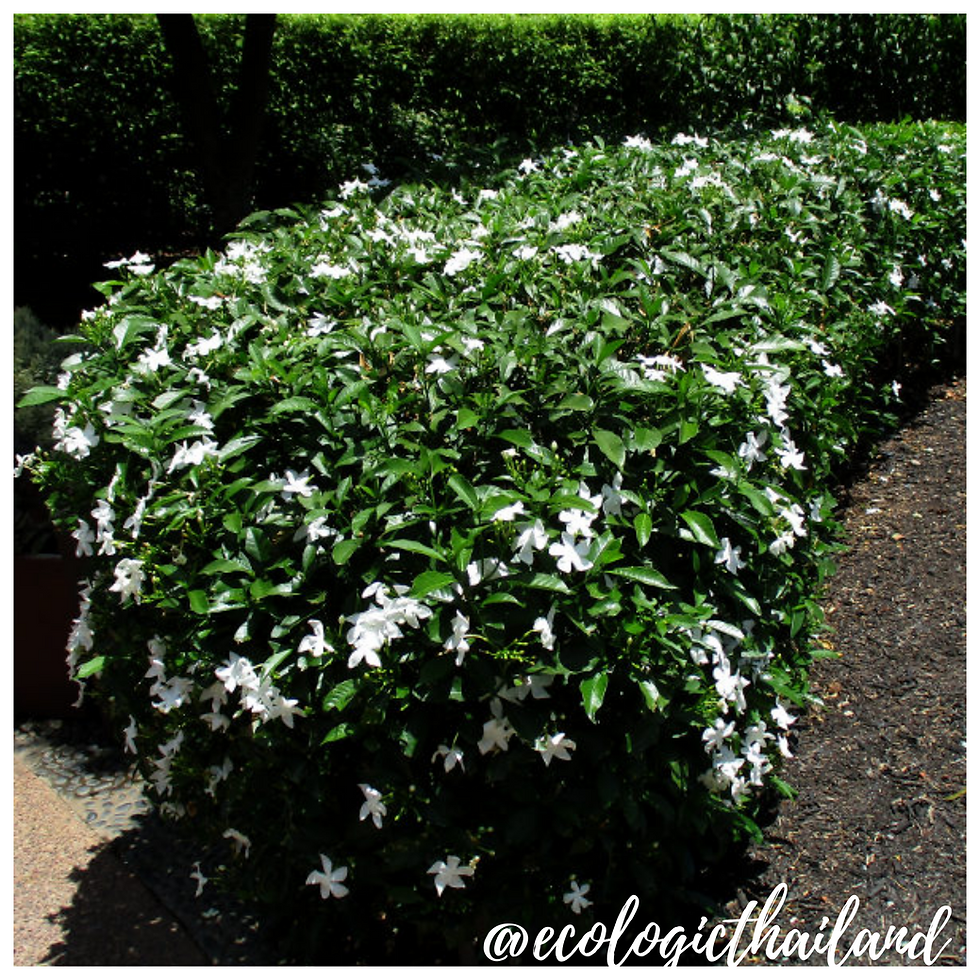Creeping Foxglove, aka Chinese Violet, Ganges Primrose, Philippine Violet
- Eco-Logic Resort
- Sep 28, 2020
- 2 min read
Updated: Sep 29, 2020
Baya | บาหยา | Asystasia gangetica micrantha
Family: Acanthaceae - Genus: Asystasia

Creeping Foxglove can be found everywhere on Mount Never-rest and in Paksong area.
Creeping Foxglove is a spreading herb or groundcover, reaching 60 centimeter in height or up to 1 meter if supported. The stems root easily. The leaves are simple and opposite. The fruit is an explosive capsule which starts out green in color, but dries to brown after opening.
The young leaves and flowers can be eaten. This plant is known to attract butterflies and bees.
This plant grows very fast, flowers and fruit can be present year round, but are mainly produced during warmer and wetter conditions. The leaves can be eaten and are harvested when young.

CREEPING FOXGLOVE
This plant is a spreading herb or groundcover, reaching 60 centimeter in height or up to 1 meter if supported. The stems root easily. The leaves are simple and opposite. The fruit is an explosive capsule which starts out green in color, but dries to brown after opening.

CREEPING FOXGLOVE LEAVES
The bright green leaves are arranged in opposite pairs along the stems and are also sparsely hairy.
The young leaves can be eaten cooked, similar to spinach.

CREEPING FOXGLOVE FLOWERS
The tubular flowers (1.8-3.5 cm long and about 3 cm across) are borne in elongated clusters (i.e. racemes) up to 10 cm long and are arranged along one-side of the stem. The flowers are placed on short stalks and have five sepals (7-9 mm long) that are fused together at the base. The petals are mostly white in color, but the bottom petal lobe has purple blotches in two parallel lines on its inside. The flowers also have four yellow stamens and an ovary topped with a long style that ends in a tiny two-lobed stigma.

CREEPING FOXGLOVE SEEDS
This plant is a spreading herb or groundcover, reaching 6 centimeter in height or up to 1 meter if supported. The stems root easily. The leaves are simple and opposite. The fruit is an explosive capsule which starts out green in color, but dries to brown after opening.
CULINARY USES OF CREEPING FOXGLOVE
Creeping foxglove its a great source and constant supply of green vegetables. Good in soups, quiches and omelettes as a spinach substitute.
Use leaves only, discard fibrous stems. Flowers can be used in salads.
NUTRITION
The nutritional composition of Asystasia gangetica leaves per 100 gram edible portion is:
water 82.6 gram , energy 234 kJ (56 kcal), protein 3.7 g, fat 1.2 g, carbohydrate 10.4 gram , Ca 226 mg, P 30 milligram, Fe 4.7 milligram, carotene 6250 μg, thiamin 0.19 mg, riboflavin 0.21 mg, niacin 1.0 milligram, ascorbic acid 42 milligram (Leung, W.-T.W., Butrum, R.R. & Chang, F.H., 1972).
TRADITIONAL MEDICINAL USE OF CREEPING FOXGLOVE
NOTE: please take advice from a doctor if you are planning to use herbal medicine.
Extracts of of the creeping foxglove are said to shown analgesic and anti-asthmatic properties in pharmacological tests.
INTO THE WILD: a down to earth experience

For guests and visitors to Paksong we organize weekly tours "The Edible Forest" and Foraging weekends: Into the Wild. We work with local guides to take you in the jungle of Paksong. After foraging, we will cook a meal with the ingredients, using bamboo together with you!
Come and join and learn about the abundance of food that nature gives us!
INTO THE WILD!


















Comments